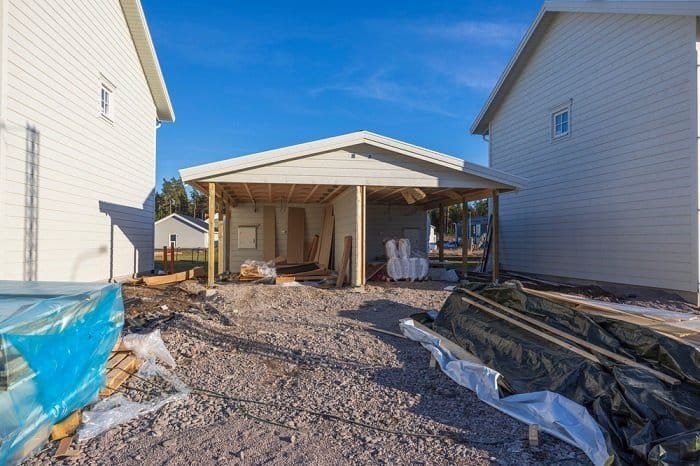30 Backdoor Steps to Patio Ideas: Transform Your Outdoor Space
Transform your backyard into a relaxing oasis with our easy-to-follow patio ideas. These ideas will help you enhance your outdoor space without breaking the bank.

Imagine lounging on comfortable chairs while sipping a cold drink, surrounded by beautiful plants and soft lights. These ideas will help you create a welcoming outdoor area where you can unwind or entertain guests. From simple DIY projects to clever design tips, you’ll find plenty of inspiration.
Ready to give your backyard a makeover? Dive into these 30 backdoor steps to patio ideas and see how you can transform your space into a place everyone loves.
Table of Contents
Designing Your Backyard Space
Planning your backyard design involves evaluating the area, picking a coherent theme, and ensuring both practical and visual elements are balanced.
Assessing the Space
Start by measuring your backyard. Note where the sun hits at different times of day, which areas are shaded, and any slopes or features like trees. This helps you plan where to place patios, plants, and seating.
Next, draw a basic layout on paper. Label existing features. Think about what you want: a dining area, a fire pit, or a garden.
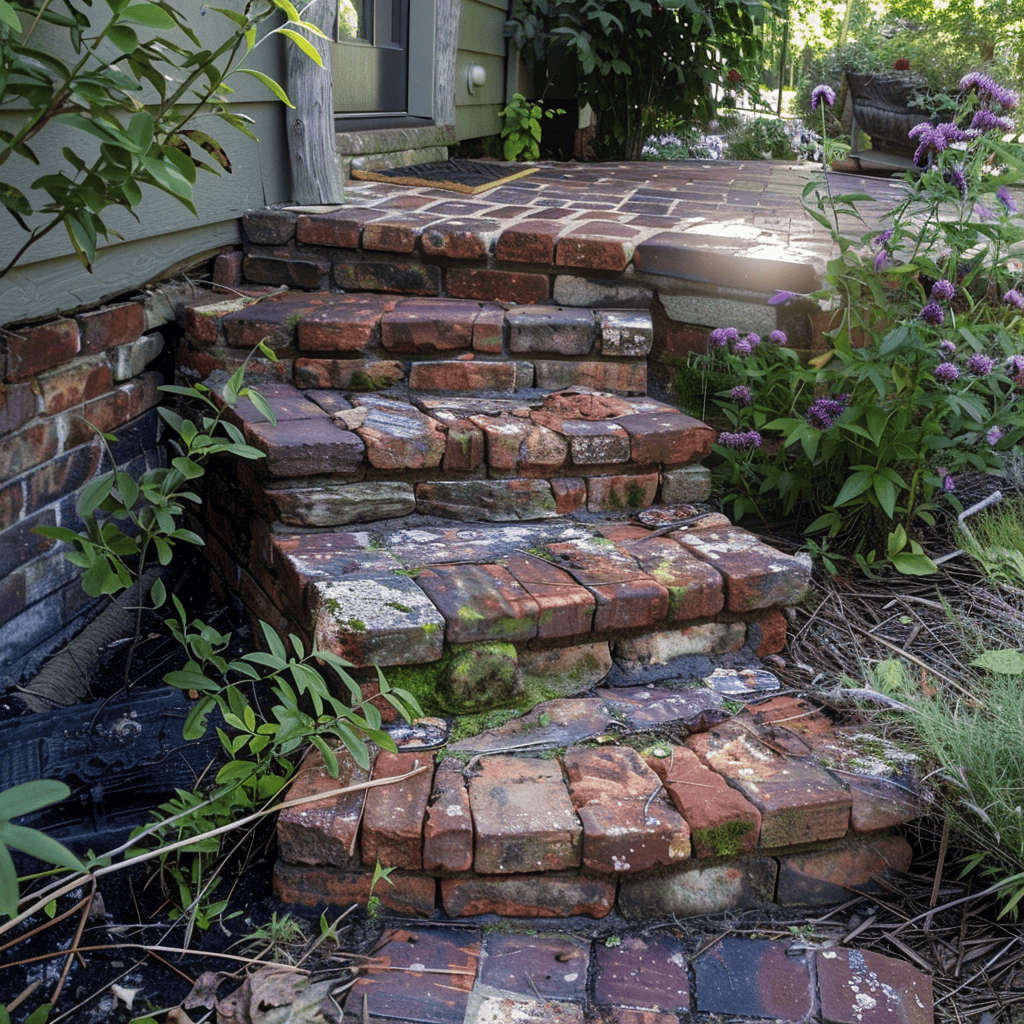
Create a list of needed materials. This can include paving stones, outdoor furniture, and plants. Evaluate your budget and make adjustments if necessary.
Choosing a Theme
Decide on a theme that matches your style. It could be modern, rustic, tropical, or desert-themed. Matching the theme to your home’s architecture creates a cohesive look.
Pick a color scheme that complements the theme. You might choose natural earth tones for a rustic look. For a modern design, go with sleek blacks and grays.

Think about the textures you will use. Wood, concrete, and metal can each contribute to the chosen theme. Identify key pieces like tables or decor items that reinforce the theme.
Balancing Functionality and Aesthetics
List the activities you want in the space. Eating, relaxing, gardening, or playing games. Plan the layout to include zones for each activity.
Choose furniture and decor that fit both the theme and practical needs. Comfortable seating, durable materials, and weather-resistant fabrics are crucial for lasting enjoyment.
Keep it simple to avoid clutter. Use plants to add life and color. Mediterranean plants like lavender and rosemary can withstand dry conditions.
Pathways should be wide enough for walking but not overpowering. Lighting adds both beauty and safety. String lights, lanterns, and ground-level LEDs create ambiance and guide visitors.
Materials for Backyard Steps
When planning your backyard steps, think about the materials that will look great and last long. Each type brings a unique look and feel, so choose carefully.
Natural Stone
Natural stone adds a timeless beauty to any backyard. You can select from granite, limestone, or slate. These stones are durable and can handle heavy foot traffic. They also offer a non-slip surface.
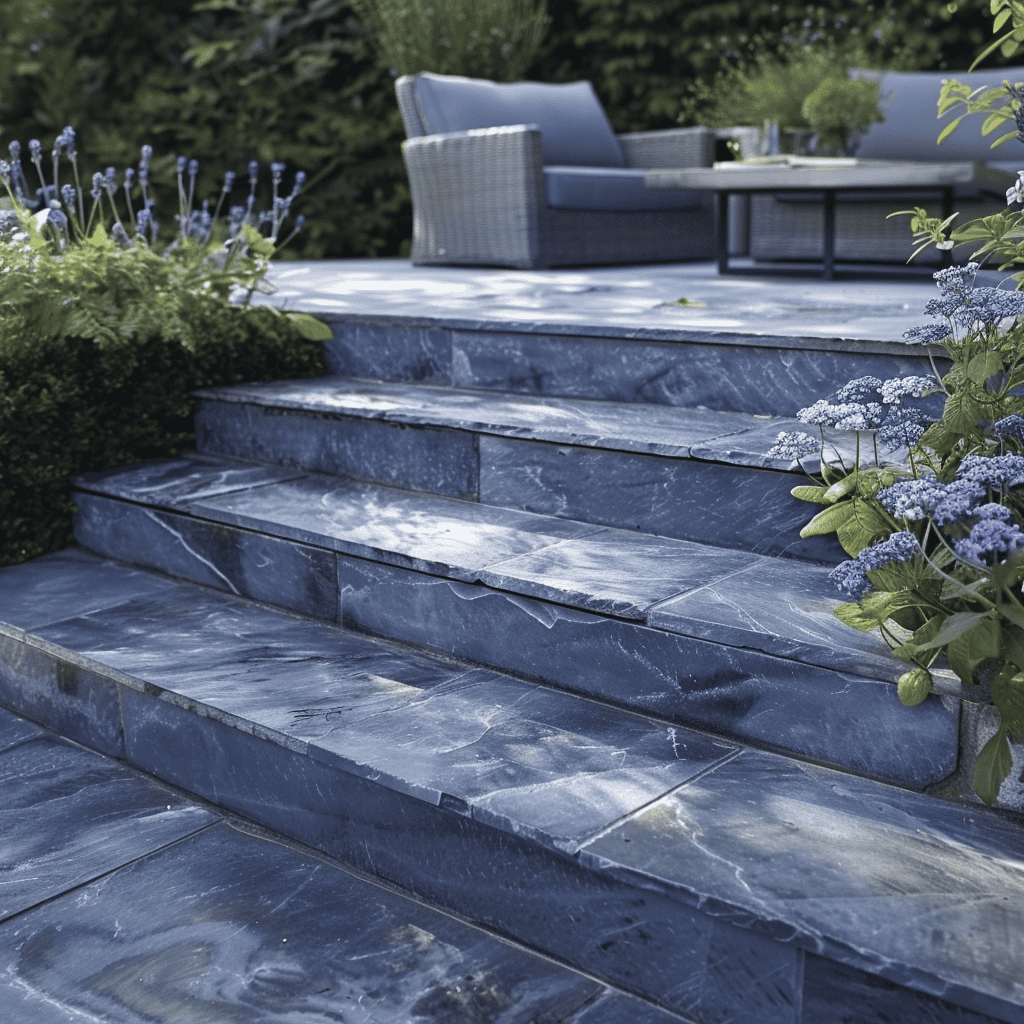
The natural variations in color and texture create an inviting and unique look. Remember, stone requires professional installation and can be expensive. Maintenance involves occasional cleaning and resealing to keep its beauty.
Pavers
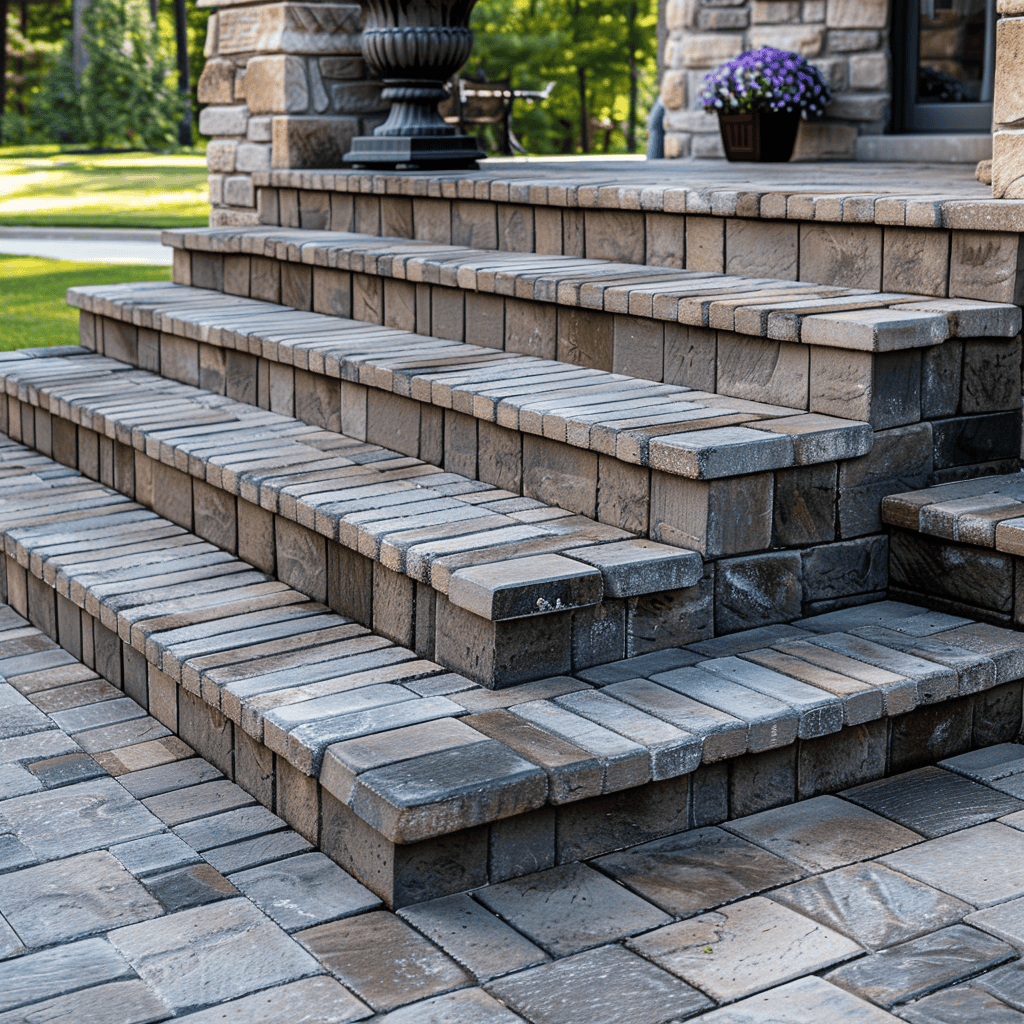
Pavers come in many shapes, sizes, and colors. You can create intricate patterns or keep it simple. They are also sturdy and stand up to weathering well.
Installing pavers is often a DIY-friendly project, making them a cost-effective choice. To maintain them, sweep regularly and hose off dirt. Occasionally, you may need to reset a paver if it shifts.
Concrete
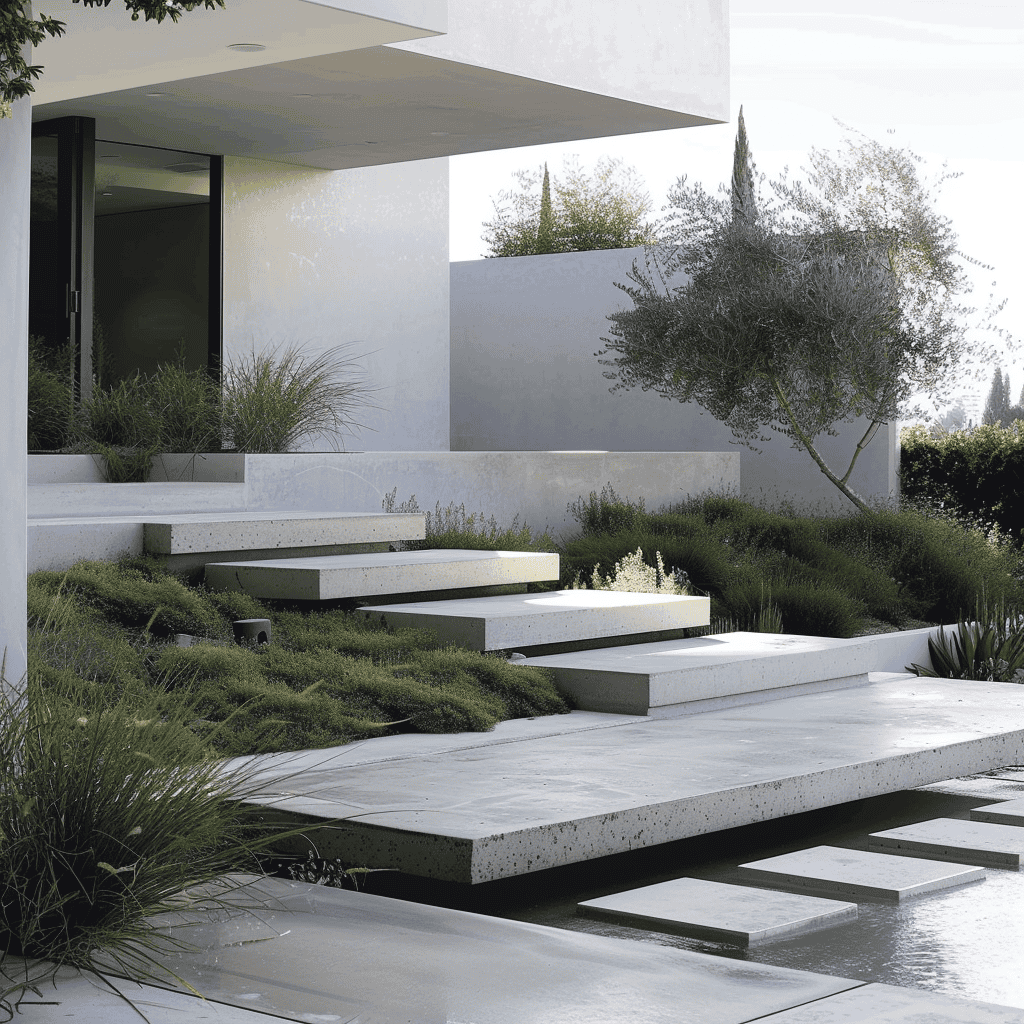
Concrete is versatile and durable. You can choose between pre-cast concrete steps or poured-in-place options. Concrete can be molded into various shapes and even colored or stained.
It’s a budget-friendly solution that requires little maintenance. Regular cleaning with a garden hose keeps it looking fresh. Concrete can crack over time, but sealing can help prevent this issue.
Wood
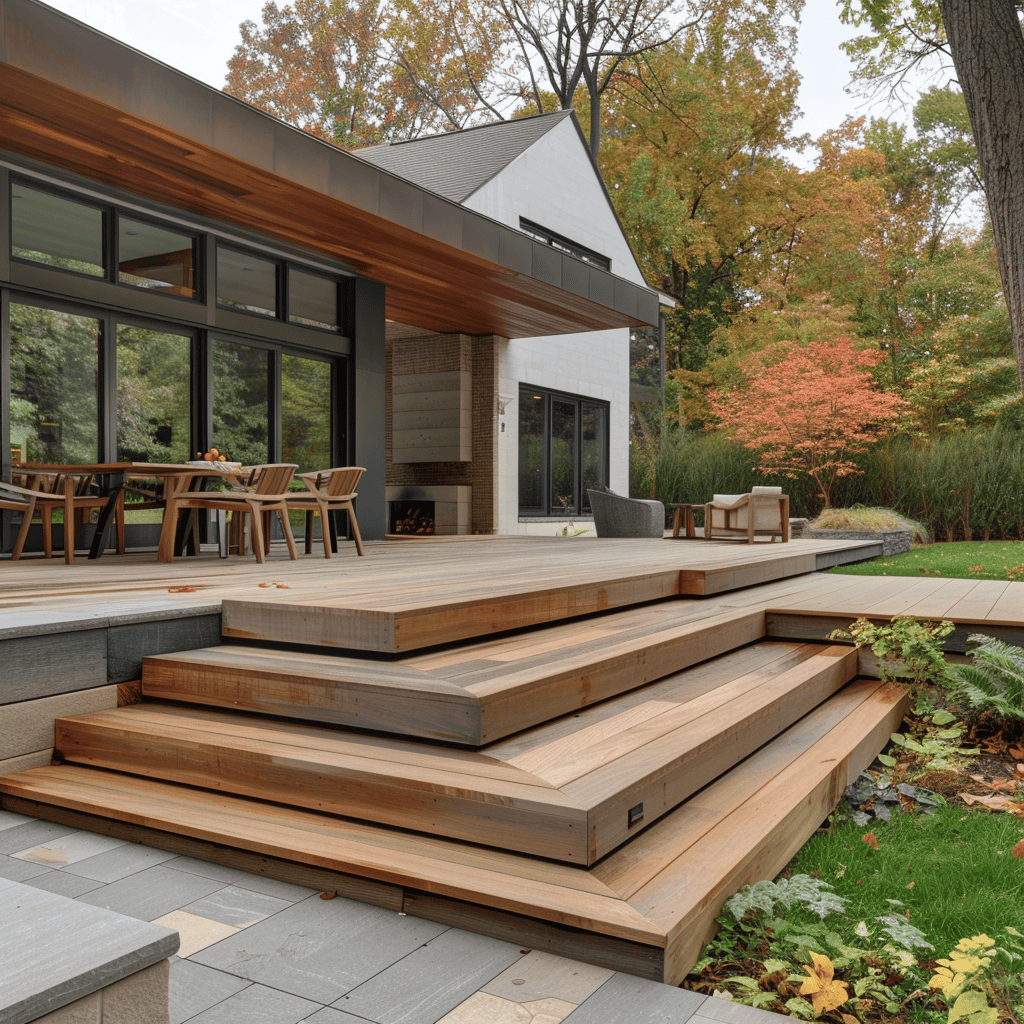
Wood steps bring a natural and warm look to your backyard. Options include treated lumber, cedar, or redwood. These woods resist insects and rot.
Wood steps are relatively easy to build and repair. They need regular treatments with sealant or stain to protect against the elements. Be sure to check for splinters and loose nails frequently.
Metal
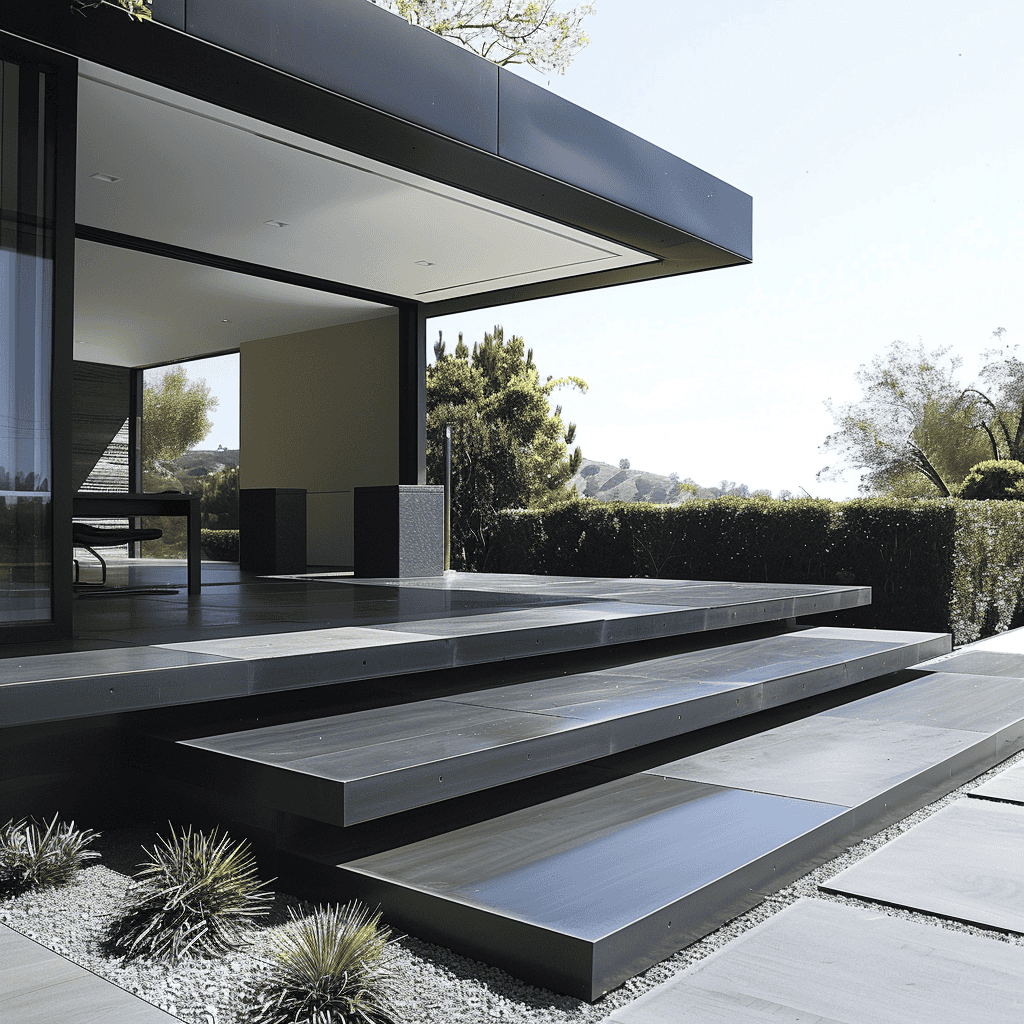
Metal steps, especially aluminum, are modern and sleek. They work well in contemporary settings. Metal is a sturdy choice, often coated to resist corrosion.
You won’t need much maintenance beyond occasional cleaning. Make sure to inspect for rust spots and repaint if necessary. Metal steps can get hot in direct sunlight, so consider using a mat or covering for comfort.
Step Styles and Shapes

Different step styles and shapes for your backyard patio can change the look and feel of your outdoor space. Think about how each style might fit into your overall vision for your patio.
Traditional Straight

Traditional straight steps are simple and functional. They work well with most patio designs and are easy to build. Straight steps can be made from a range of materials like concrete, wood, or stone. They provide a classic look and are usually less expensive. These steps are also great for connecting different levels of your backyard with a neat, clean line.
Curved
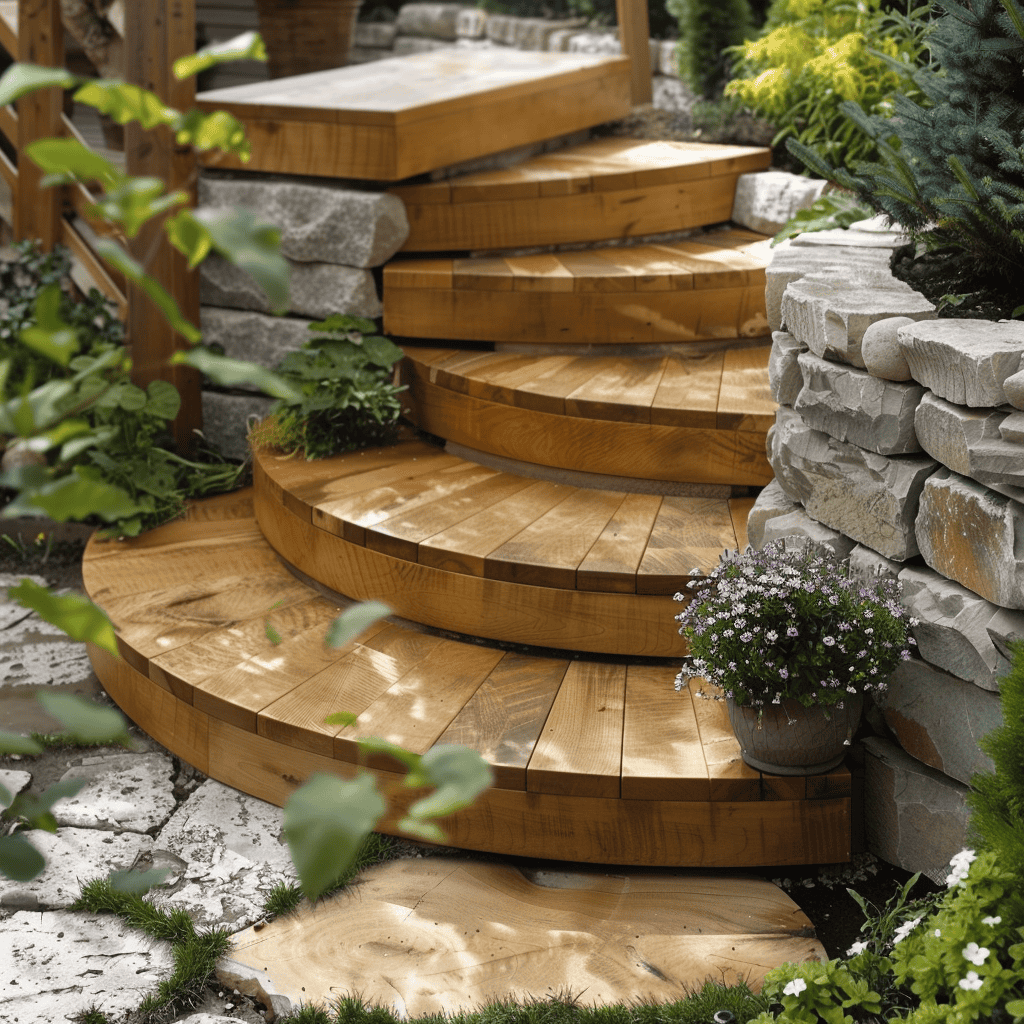
Curved steps add a unique and elegant touch to your patio. They are more visually interesting than straight steps and can give your backyard a soft, flowing look. Curved steps usually require more planning and precise work, but the end result is often worth it. Materials like brick, stone, or molded concrete work best. With curved steps, you can create a gently winding path that feels more inviting.
Spiral
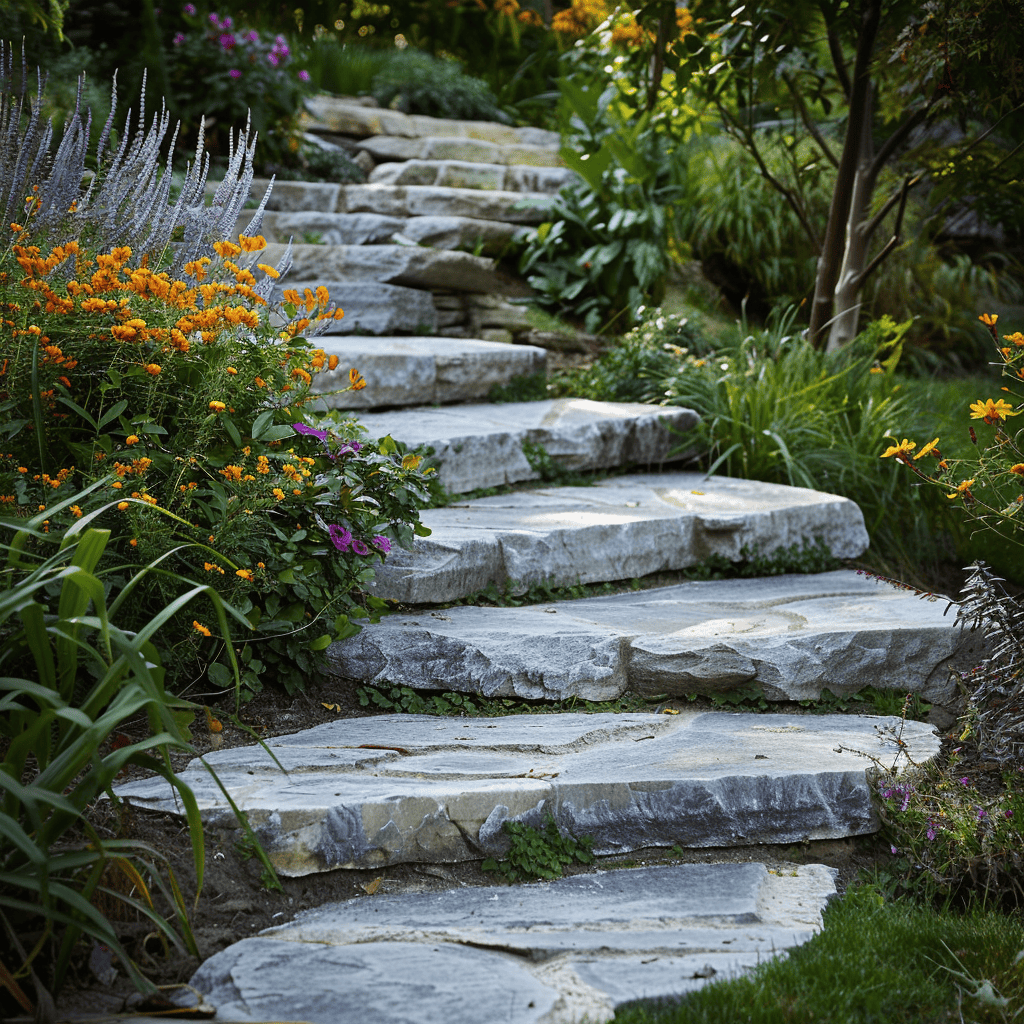
Spiral steps are both stylish and space-saving. They are perfect if you have limited space but want an eye-catching design. These steps look great in modern and contemporary backyard settings. Spiral steps can be made from materials like metal, stone, or even wood. Building spiral steps can be more challenging and may need a professional touch, but they often become a standout feature in any backyard.
Floating
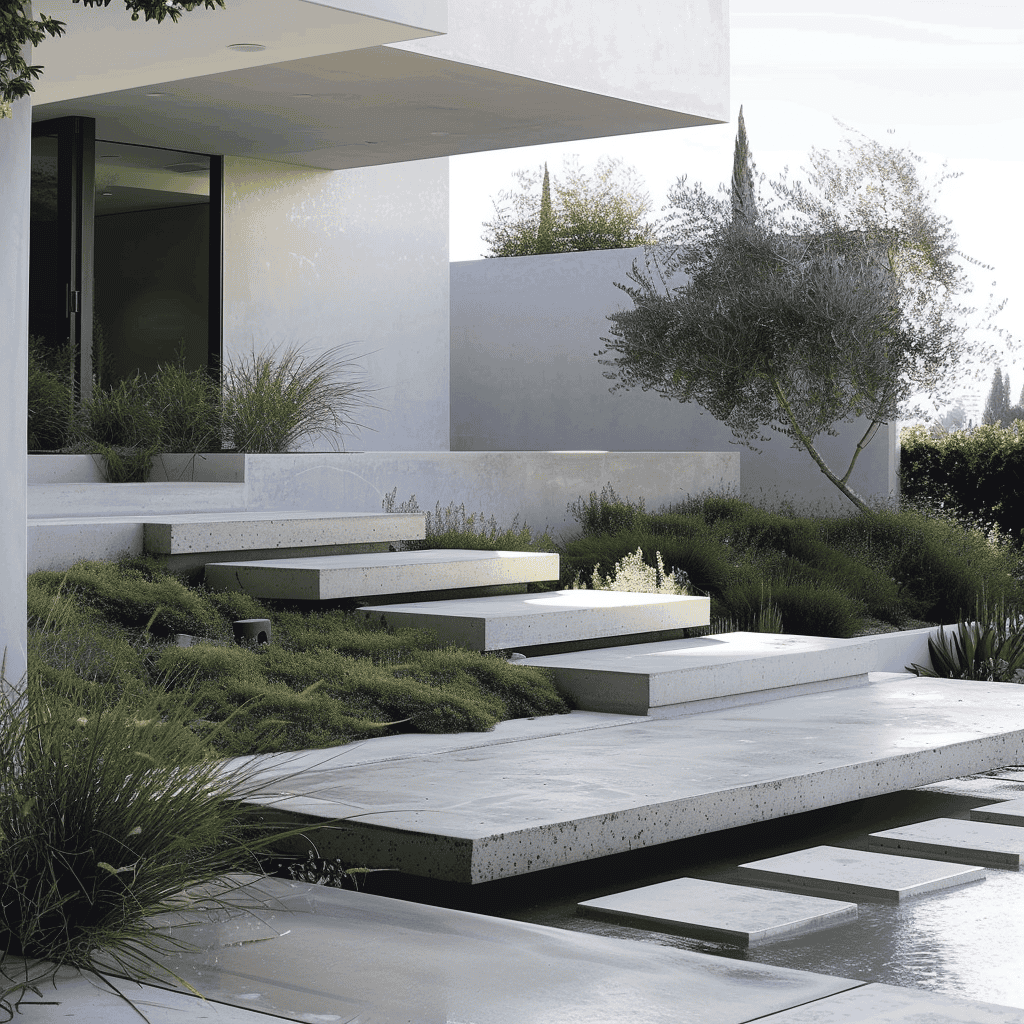
Floating steps create a modern, almost futuristic look. These steps appear to “float” without visible supports, adding a sleek, minimalist feel to your patio. They can be made from wood, stone, or concrete and are usually anchored into the ground or connected to a hidden structure. Floating steps can give your backyard a sense of openness and light, making them an exciting option for contemporary designs.
Incorporating Landscaping
Enhance your backyard steps to patio experience with well-chosen plants, attractive borders, and strategically placed lights. These elements can transform your space into a more enjoyable and functional area.
Plant Selection
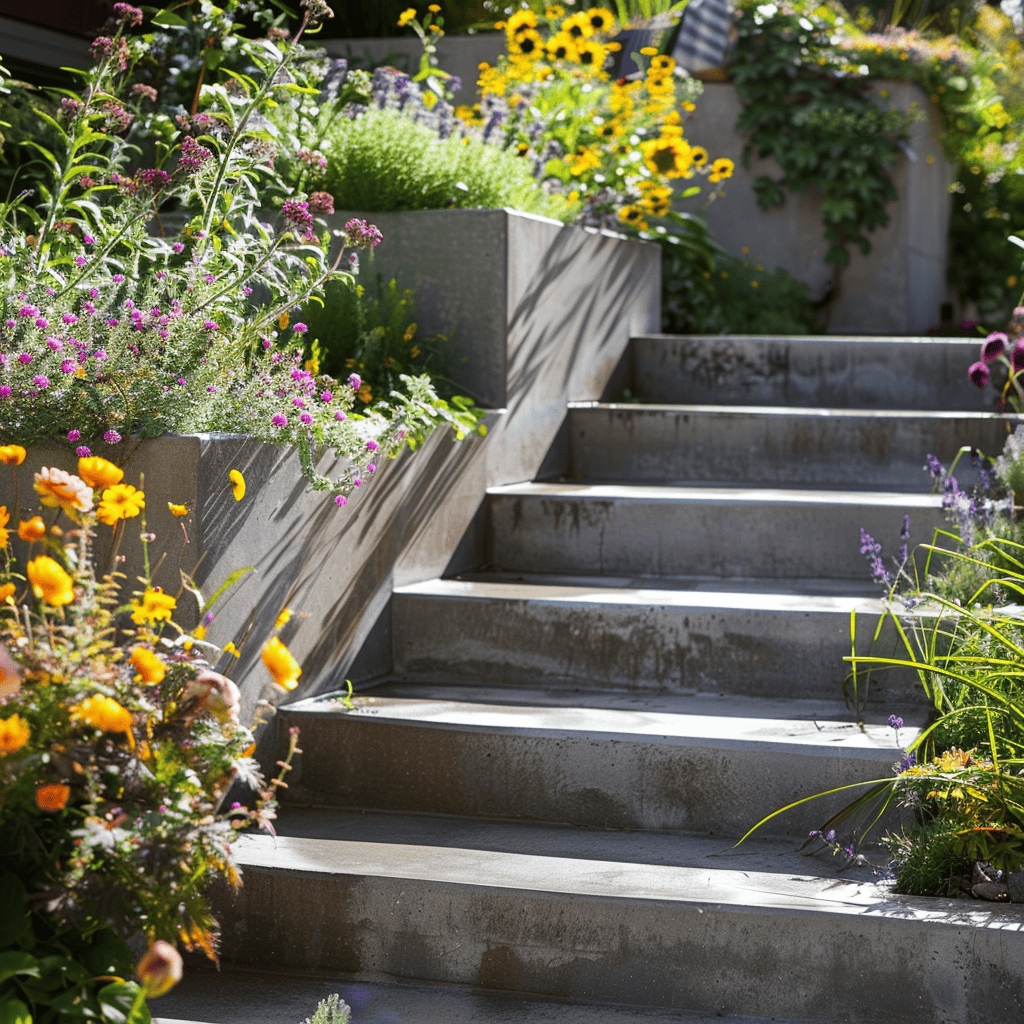
Choosing the right plants is essential. Native plants are a great choice because they need less water and care. Perennials return every year, making maintenance easier. Think about height and color: taller plants can go in the back, while shorter flowers line the steps.
When selecting plants, consider seasonal interests. Flowers that bloom at different times can provide year-round interest. Herbs or vegetables can be a good addition for a kitchen garden feel. It’s crucial to consider how much sunlight your garden gets: some plants thrive in full sun, while others prefer shade.
Decorative Borders

Decorative borders can enhance the look of your backyard steps and patio. Materials like stone, brick, or wood can add a natural feel. Concrete or metal edging provides a modern touch. When choosing materials, think about the style of your home and yard.
Borders are not just for looks; they also help keep plants contained and define spaces. This can make maintenance simpler. Raised borders can add height and dimension to flat areas and can be planted with colorful flowers or lush greenery.
Lighting Features
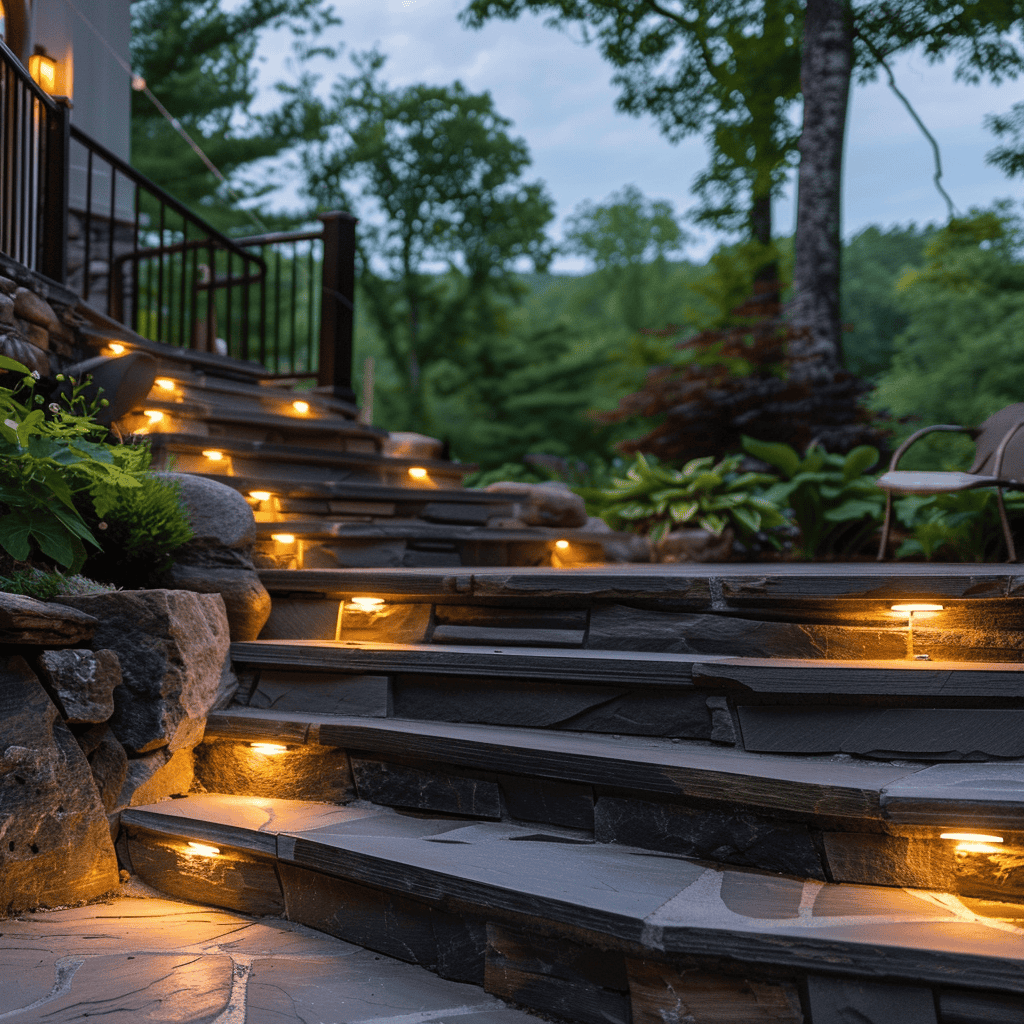
Lighting is key to creating an inviting atmosphere. Solar lights are energy-efficient and easy to install. String lights can add a cozy, warm ambiance. Lights placed along the steps make them safer at night.
Think about the purpose of your lighting. Accent lights can highlight plants or decorative features. Path lights can guide guests safely to the patio. Consider using LED lights, as they last longer and use less electricity. Proper lighting can extend the time you enjoy your outdoor space.
Sustainability Considerations
Considering sustainability can make your backyard patio both eco-friendly and beautiful. This involves choosing materials that are kind to the environment, using water efficiently, and harnessing solar power for lighting.
Eco-Friendly Materials
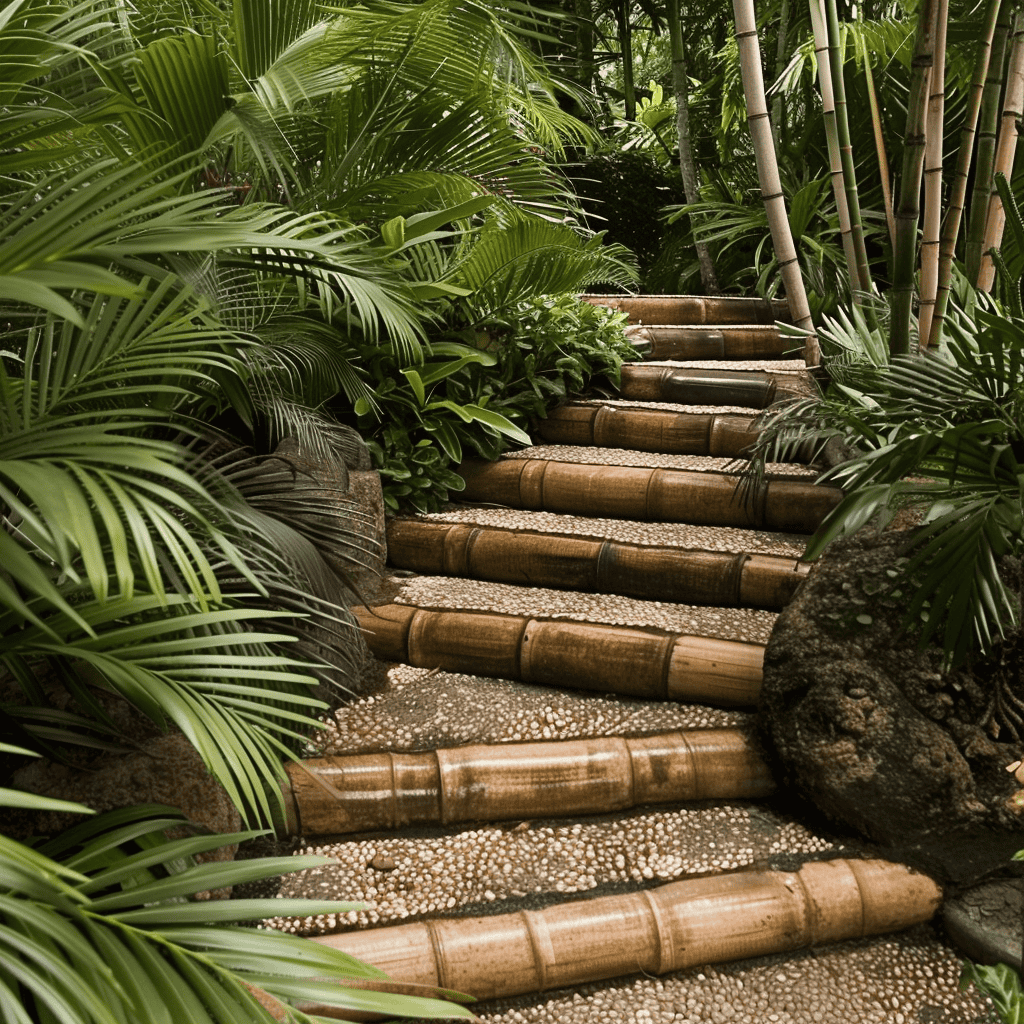
Choose materials like recycled plastic, bamboo, or locally sourced wood. Recycled plastic is durable and requires little maintenance. Meanwhile, bamboo grows quickly and is a renewable resource. Lastly, locally sourced wood means less transportation, which cuts down on carbon emissions.
You might also consider natural stone or pavers made from recycled materials. These options can be stylish while also being better for the planet. Using eco-friendly sealants or finishes can also help make traditional materials more sustainable.
Drip Irrigation for Plants

Drip irrigation systems use less water compared to traditional sprinklers. Instead of spraying water over a large area, drip lines deliver water directly to the base of plants. This means less water is wasted through evaporation or runoff.
You can set up a system with timers and moisture sensors to ensure plants get the right amount of water. This not only conserves water but also helps plants grow healthier by providing steady hydration.
Solar Lighting Options
Using solar lights reduces electricity usage. Solar-powered lights come in various styles, from string lights to pathway markers. They capture energy from the sun during the day and provide light at night, which is both cost-effective and environmentally friendly.
To install, place them in sunny spots where they can charge fully. Some options even have motion sensors or dimmer settings to use energy more efficiently. Solar lights are easy to install and maintain, making them a great addition to your sustainable patio.
Safety and Accessibility

Creating safe and easily accessible steps for your backyard is essential. Focus on features like handrails, non-slip surfaces, and proper step dimensions to enhance both safety and comfort.
Handrails and Guardrails
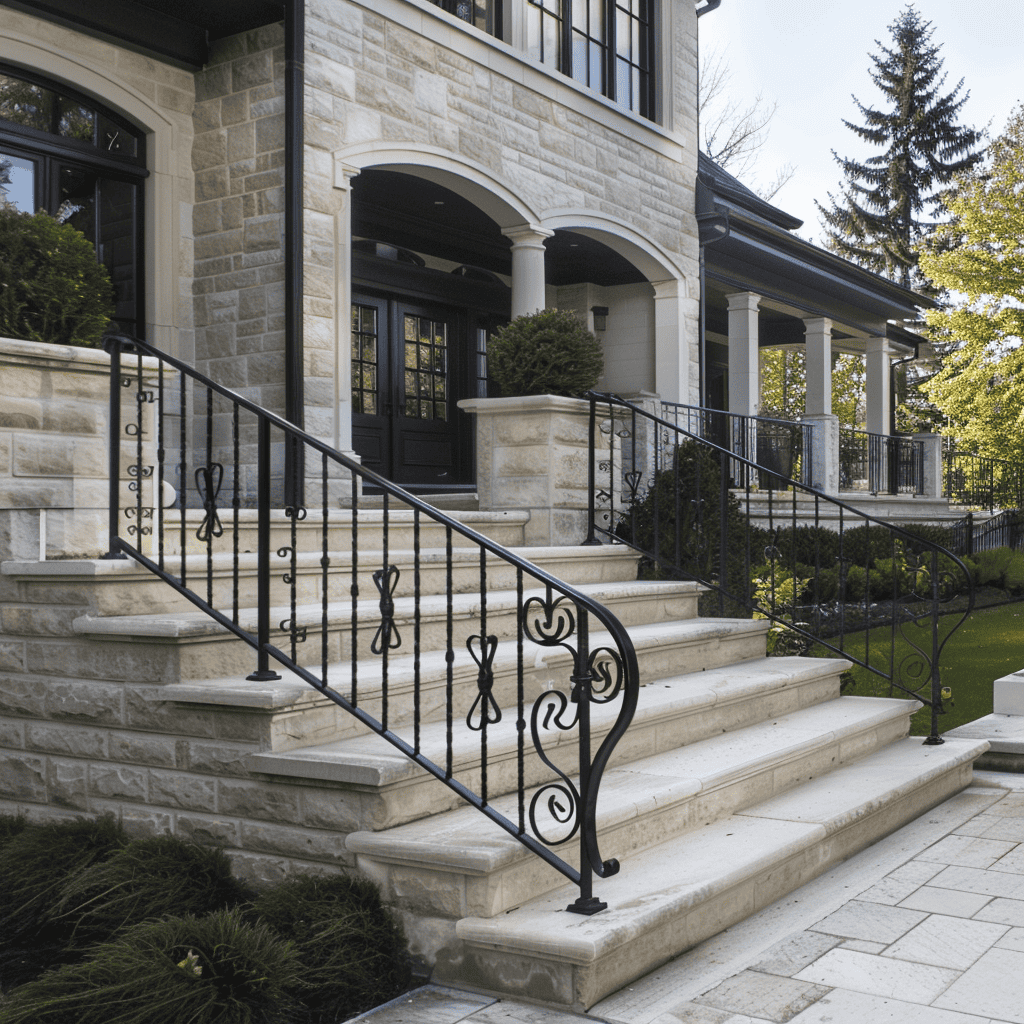
Handrails and guardrails are vital for preventing falls. Make sure to install balanced rails on both sides of the steps. Also, ensure they are at a suitable height, usually between 34 to 38 inches above each step. Lastly, the rails should be sturdy and smooth to hold.
Guardrails are necessary if your steps are higher than 30 inches off the ground. They help to prevent falls from elevated areas. If you have children or elderly family members, these features become even more crucial.
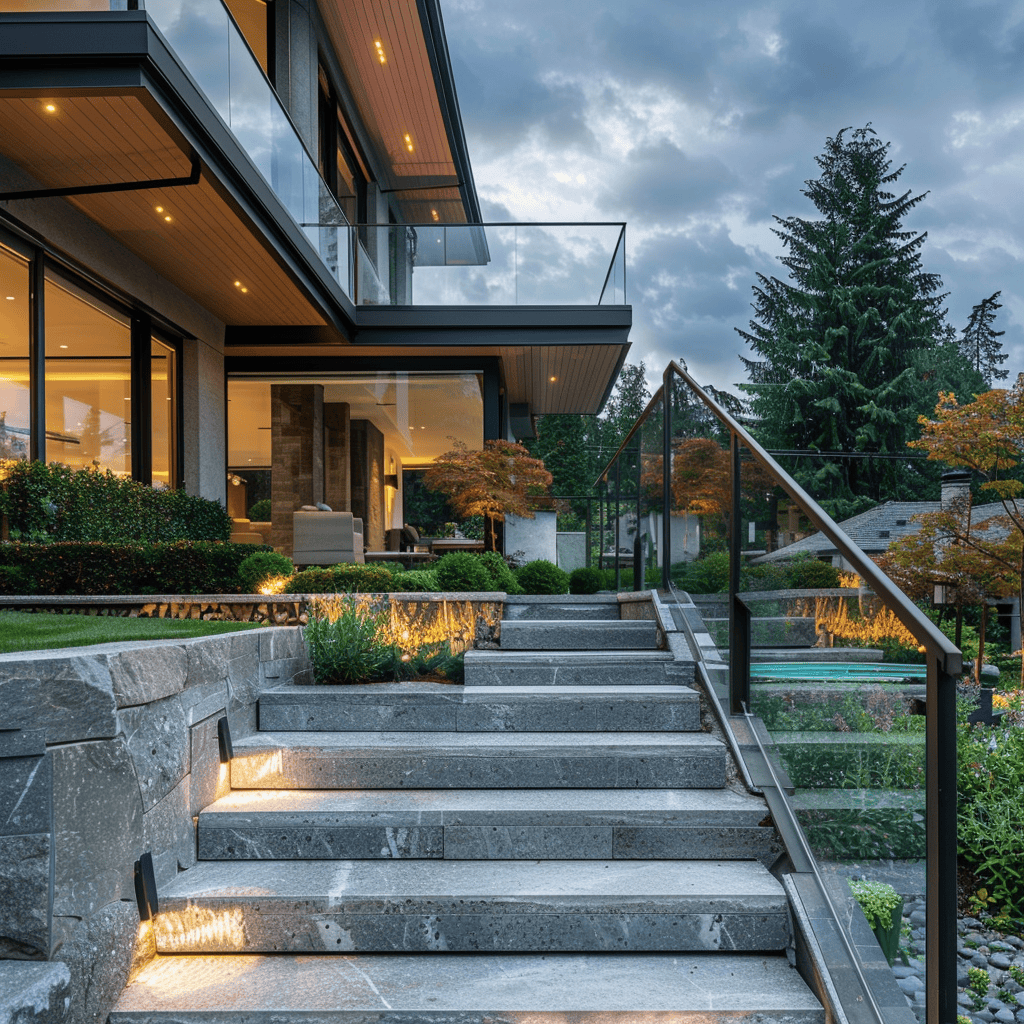
Non-Slip Surfaces
Non-slip surfaces can prevent accidents, especially when it rains. Choose materials like textured stone, concrete, or treated wood. You can also use non-slip treads or adhesive strips on each step.
Consider installing outdoor rugs designed to stay in place even when wet. These options provide extra grip and reduce the chance of slipping. Always keep steps clear of leaves or debris to maintain their non-slip quality.
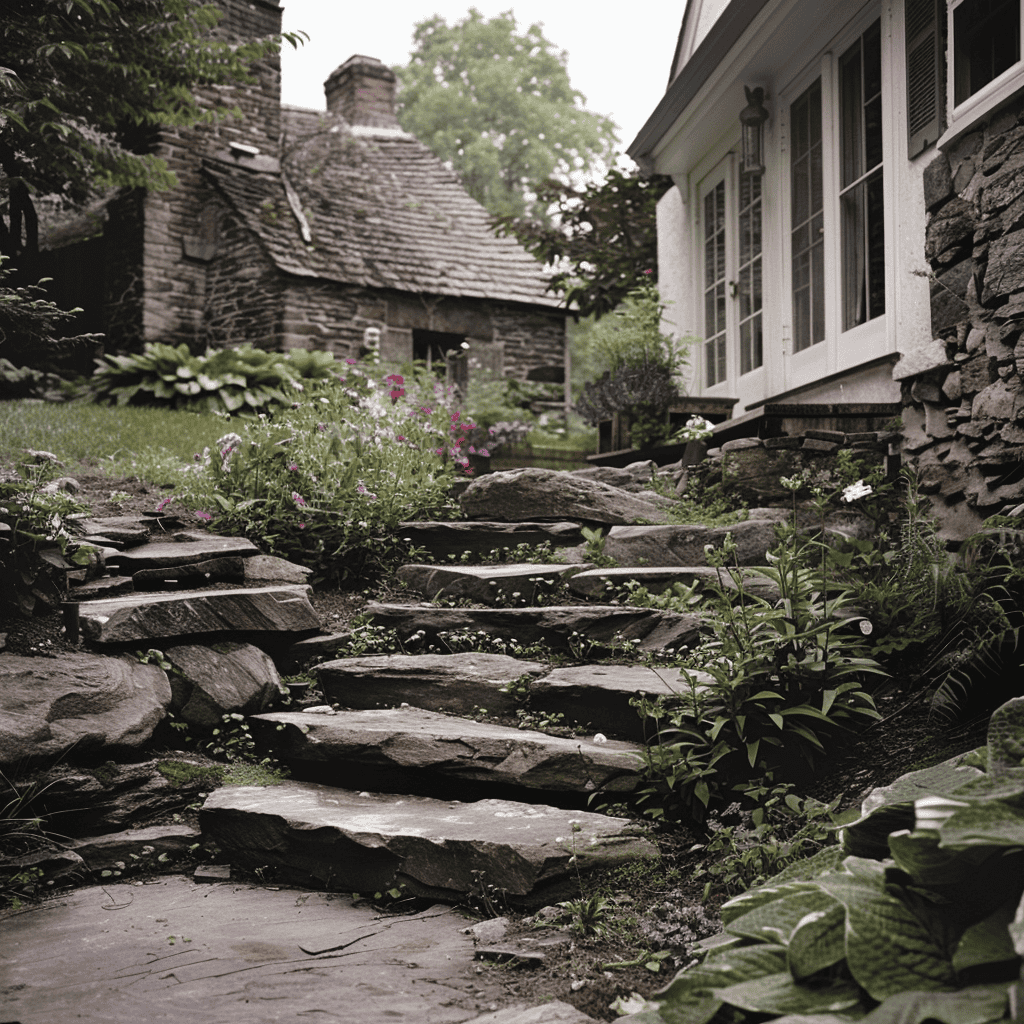
Step Dimensions for Comfort
The size of each step matters for safety and comfort. The riser height should be between 4 to 7 inches. This range is easy to manage for most people.

Meanwhile, the tread depth, the horizontal part of the step, should ideally be around 12 inches. This gives enough space for your foot to land comfortably. Uniform step sizes help to prevent trips and falls, so make sure all steps are the same height and depth.
Seasonal Adaptations
Adapting your patio for different seasons involves choosing the right materials that can withstand various weather conditions and knowing how to maintain them, especially during winter.
Weather-Resistant Materials
Choosing the right materials for your patio can make a big difference. Teak wood is durable and weathers nicely. It’s resistant to rain and snow, making it perfect for outdoor use.
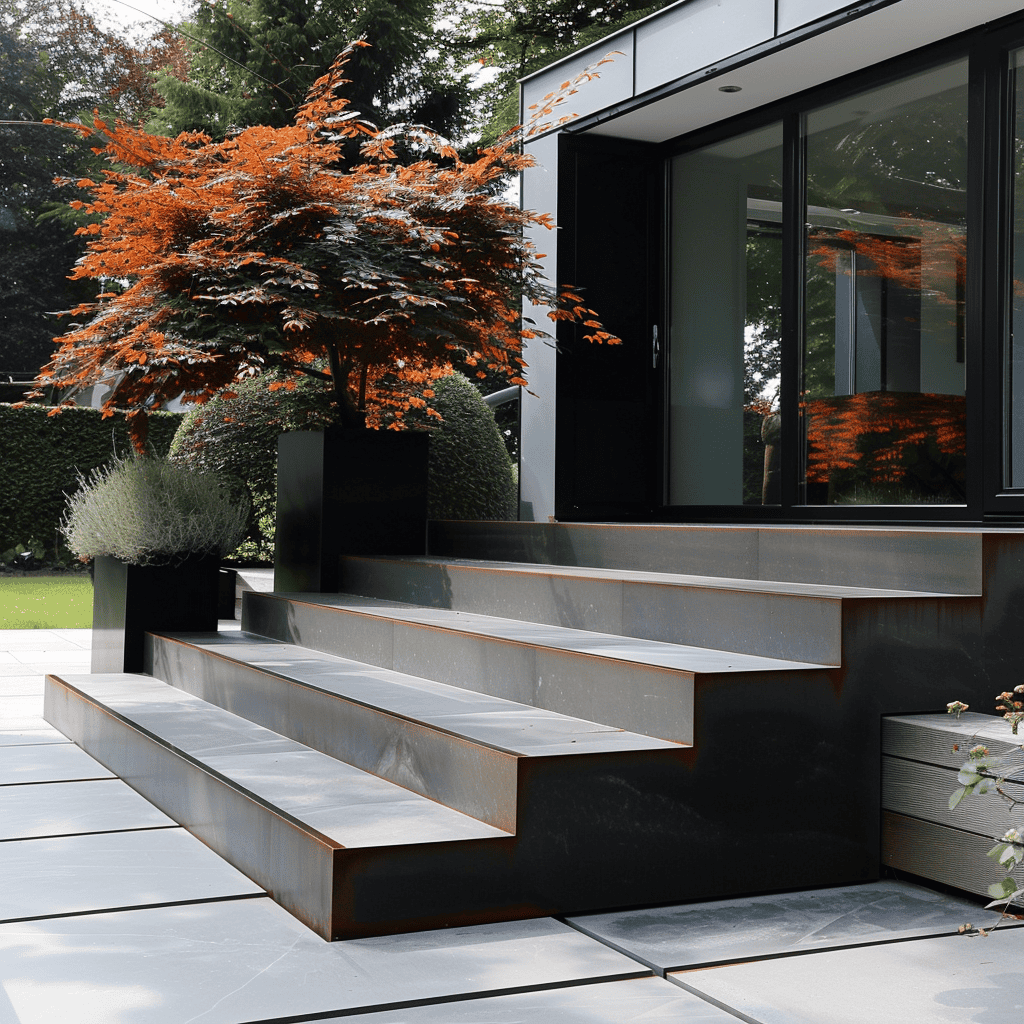
Metal furniture, especially aluminum and stainless steel, stands up well to rust and is easy to clean. Meanwhile, resin wicker is great because it looks like natural wicker but lasts longer in harsh weather.
Concrete and stone are good choices for patios. They don’t get damaged easily, even in extreme weather conditions. For cushions and pillows, use outdoor fabrics like acrylic or polyester, which resist fading and mildew.
Maintenance Tips for Winter
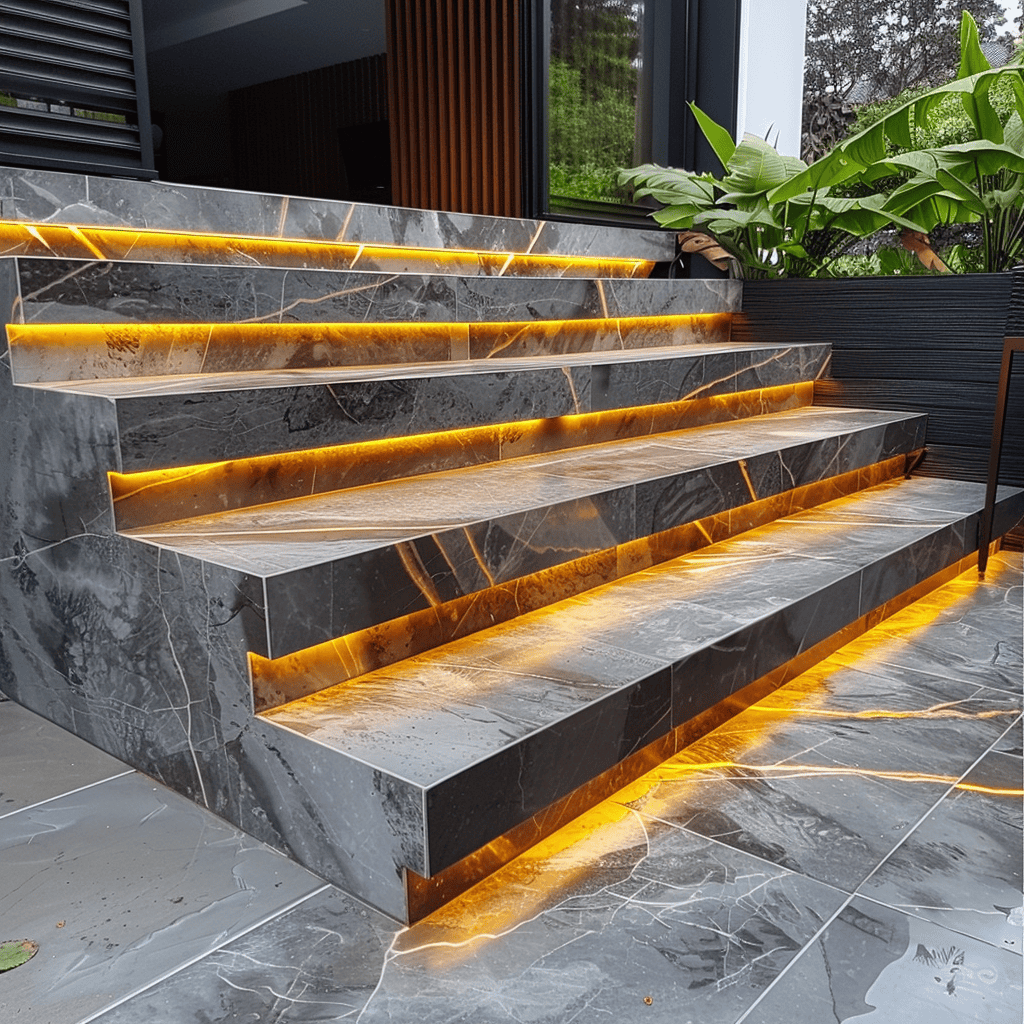
Winter can be tough on your patio, so proper maintenance is crucial. Start by cleaning and storing any cushions and fabrics. Use waterproof covers to protect furniture. Sweep away any leaves or debris regularly to prevent mold and mildew.
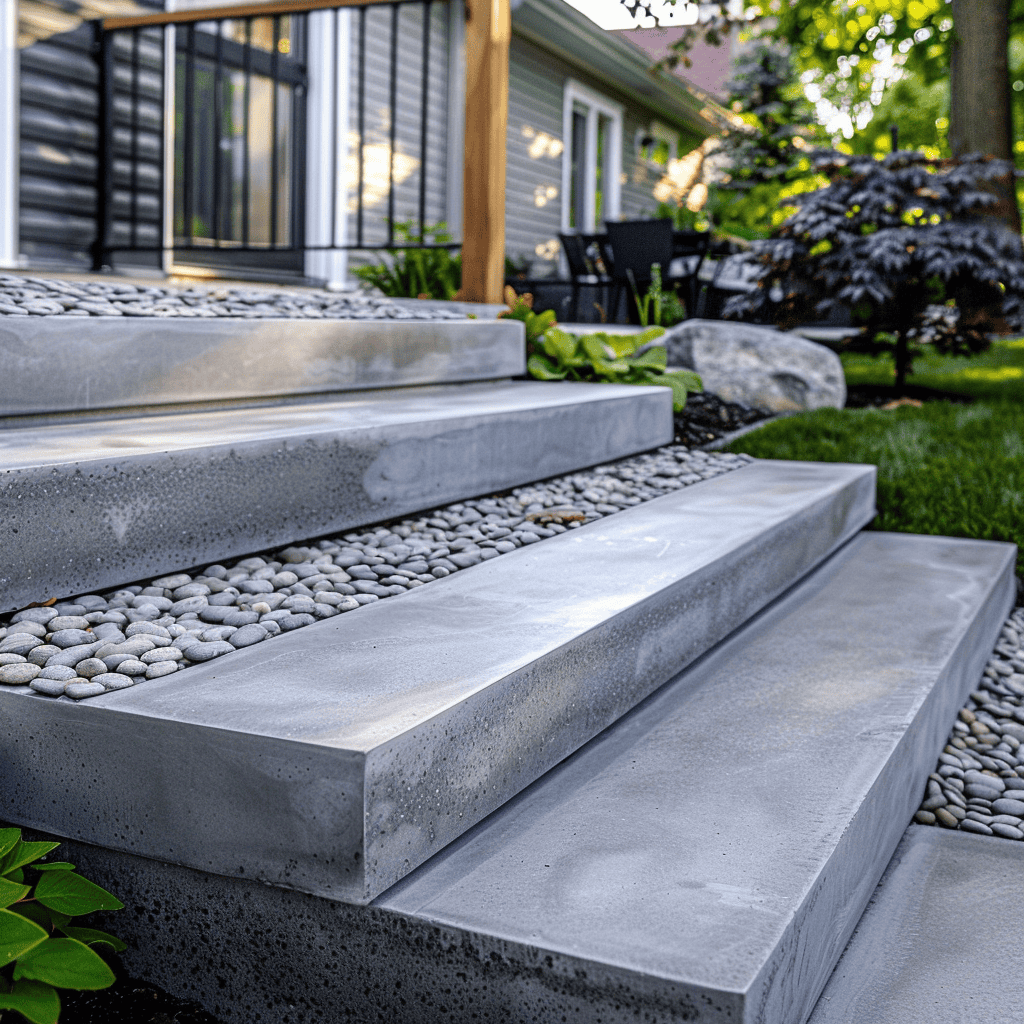
For metal furniture, apply a protective sealant to prevent rust. Meanwhile, wooden furniture should be treated with oil or sealant to keep it from cracking. Make sure to shovel snow off your patio promptly to avoid damage.
Draining any water features and covering them can prevent freezing and cracking. Keeping up with these tasks will ensure your patio stays in good condition all winter long.
DIY vs Professional Installation

Choosing between DIY and professional installation for your patio involves weighing factors like cost, time, and skill level. Consider the advantages and disadvantages of each option before making a decision.
Pros and Cons of DIY
Pros:
- Cost Savings: Doing it yourself can save you a lot of money. Avoid labor costs by handling the work yourself.
- Personal Touch: Customize the project exactly how you want it. You have full control over materials and design.
- Skill Building: Learning new skills can be fulfilling. It’s a great way to gain hands-on experience.
Cons:
- Time-Consuming: DIY projects often take longer. It may require dedicating several weekends or even months.
- Skill Level: Complex tasks need expertise. If you lack the skills, you risk making costly mistakes.
- Physical Labor: Preparing and installing a patio is hard work. Lifting heavy materials can be challenging.
Finding the Right Contractor
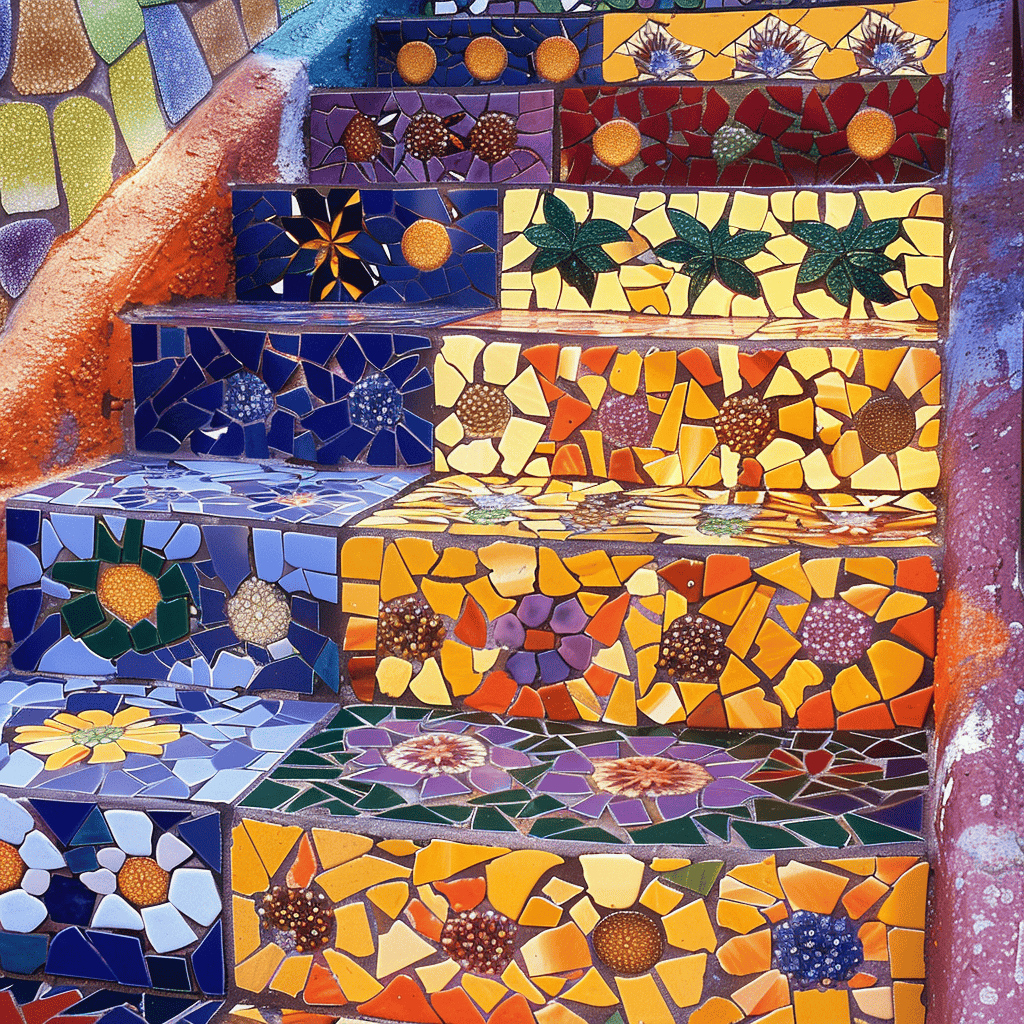
Research: Look for contractors with good reviews. Websites like Yelp and Angie’s List can help you find reliable professionals.
Get Quotes: Ask for estimates from multiple contractors. Compare prices and what each service includes to make an informed choice.
Check Credentials: Ensure the contractor is licensed and insured. This will protect you from potential liabilities or issues.
Ask Questions: Don’t hesitate to ask about their experience with similar projects. See examples of their previous work to gauge quality.
Contracts: A written agreement is crucial. Make sure it includes specifics like timeline, cost, and any guarantees.
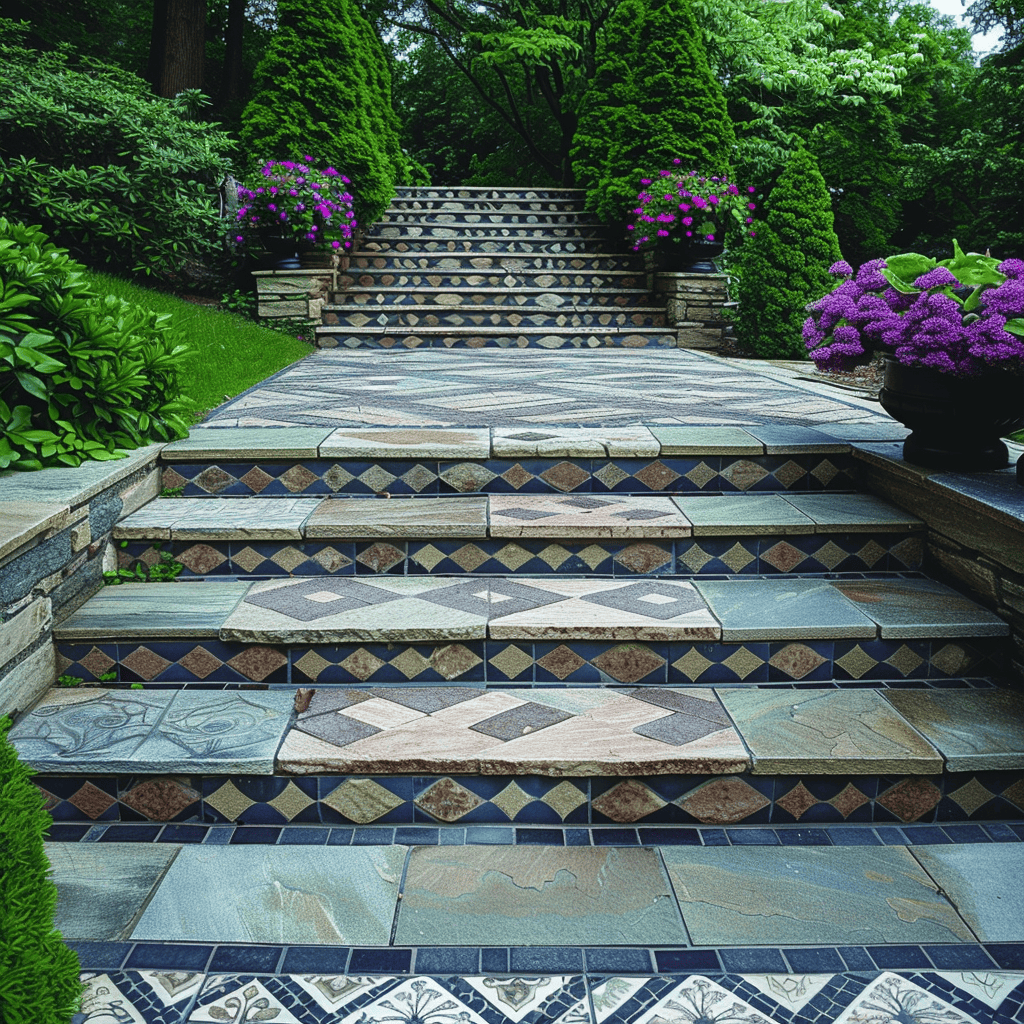
Communication: Good communication is key. Choose a contractor who is responsive and willing to discuss details with you.
Permits and Legal Requirements
Before you start building your backyard patio, it’s important to check the permits and legal requirements.
Step 1: Visit your local government office or their website.
You will need to understand what permits are required.
Step 2: Ask specific questions: What type of permit do you need? How long does it take to get one?
Make sure to get all your questions answered.
Step 3: Prepare the necessary documents. This often includes a site plan, design drawings, and details about the materials you’ll use.
Step 4: Submit your application and pay any fees.
Step 5: Wait for approval. This can take anywhere from a few days to a few weeks.
During this time, make sure you have everything lined up to start as soon as you get the green light.
If you’re in a neighborhood with a homeowner’s association (HOA), you’ll also need to check their rules. HOA rules can be strict.
Important: Failing to get the right permits can lead to fines or having to remove your new patio!
Pro Tip: Keep copies of all permits and paperwork in a safe place for future reference.
Budgeting for Your Project
It’s important to plan and manage your budget to ensure your backyard steps project is successful and stays within your financial limits. You need to think about cost estimation and making decisions on quality versus cost.
Cost Estimation
Start by listing all the materials you will need. Consider wood, stone, or concrete for the steps. Also, think about tools, safety gear, and any decorative items like plants or lighting.
Make a budget by estimating the cost of each item. Get price quotes from different stores or online retailers. Here’s a sample table to help you:
| Item | Estimated Cost |
|---|---|
| Lumber | $100 – $200 |
| Concrete Mix | $50 – $100 |
| Hand Tools | $30 – $50 |
| Plants | $20 – $40 |
| Lighting | $30 – $60 |
Remember to include a little extra money for unexpected expenses.
Quality vs Cost Trade-offs
Think about how long you want your steps to last. Investing in good-quality materials might cost more upfront, but they can save money in the long run.
For instance, treated wood lasts longer than regular wood, but it’s more expensive.
Sometimes, you can save money by doing parts of the project yourself. You could choose to install basic lighting yourself and only hire a professional for more challenging tasks.
It’s okay to mix high-quality items with less expensive ones. For example, use durable material for the steps and budget-friendly plants.
Make sure you balance your choices based on durability, aesthetics, and overall functionality to get the best value for your money.
Maintenance and Upkeep

Keeping your patio looking great requires regular cleaning and timely repairs. By following these simple steps, your backyard space will stay beautiful and safe for years to come.
Regular Cleaning
Clean your patio every week. This keeps dirt, leaves, and stains from building up.
Sweep off any debris with a broom or leaf blower. For a deeper clean, use a mixture of water and mild soap.
Scrub the surface with a brush to remove stains and algae.
Rinse off the soap with water. If you have a stone or brick patio, using a power washer can be very effective. Make sure to adjust the pressure to avoid damaging the surface.
During fall, remove fallen leaves regularly to prevent staining. In winter, clear snow and ice gently. Avoid using metal shovels that can scratch the surface. Instead, use plastic shovels or a snow blower.
Repair and Replacement Strategies
Inspect your patio regularly. Look for cracked tiles, loose stones, or broken bricks. Fixing small issues early can prevent bigger problems later.
If you notice cracks, fill them with a suitable filler. For loose stones, reapply the adhesive underneath.
If a patio tile or stone is damaged beyond repair, you may need to replace it. Carefully remove the damaged piece without disturbing the surrounding area.
Replace it with a new piece that matches in color and size. Re-secure it with adhesive.
Check for signs of wear around the edges and joints. Reapply sealant every few years to protect against water damage and fading.
Proper sealing also prevents weeds from growing between the tiles or stones.
Before and After Transformations
Seeing changes in backyards can provide big inspiration and proof that it’s possible to improve any space. Real stories and satisfied people show how great these updates can be.
Case Studies
The Smith Family: The Smiths’ backyard was once a plain patch of grass with a few scattered toys. They added stone steps, colorful flower beds, and a cozy fire pit area. Result: A warm, inviting space for family nights.
The Johnsons: This family had a dry, dusty yard. With wooden steps, a small pond, and some native plants, their space became a green oasis. Outcome: A relaxing spot for outdoor yoga and bird-watching.
The Parkers: Their backyard faced drainage issues. Installing terraced steps and rain gardens solved the problem and added beauty. Result: A functional and attractive backyard that handles rain effortlessly.
Testimonials
Emily R.: “Our yard was bland, with no personality. Adding the steps and flowers transformed it! Now, we love spending time out there, and our kids enjoy it too.”
Mark S.: “We were skeptical about the changes, but the transformation amazed us. Our once dusty yard is now lush and beautiful. The wooden steps add a rustic charm we adore.”
Linda & Joe K.: “Fixing drainage problems seemed daunting, but the terraced steps were the perfect solution. Our backyard is not only functional now, but also a lovely place to entertain friends.”
Conclusion

You’ve got wonderful ideas to transform your backyard patio.
Adding decorative stones can make a big impact. They look great and are easy to maintain.
Outdoor lighting adds warmth. String lights or lanterns create a cozy feel.
Think about comfortable seating. A mix of chairs and benches works well.
Consider a fire pit. It’s great for gatherings and roasting marshmallows.
Your patio can become a favorite spot in your home. Enjoy planning and designing!




